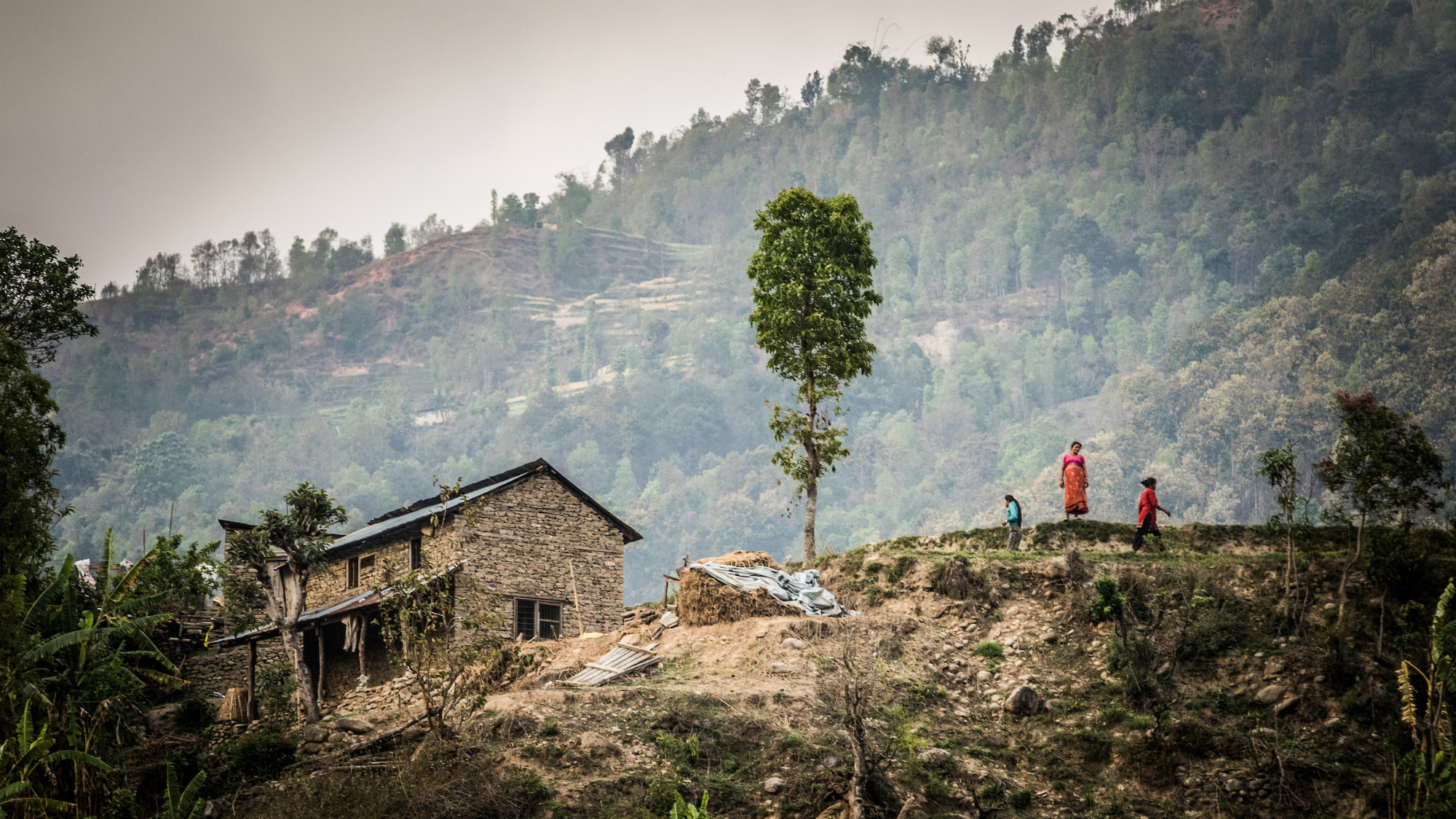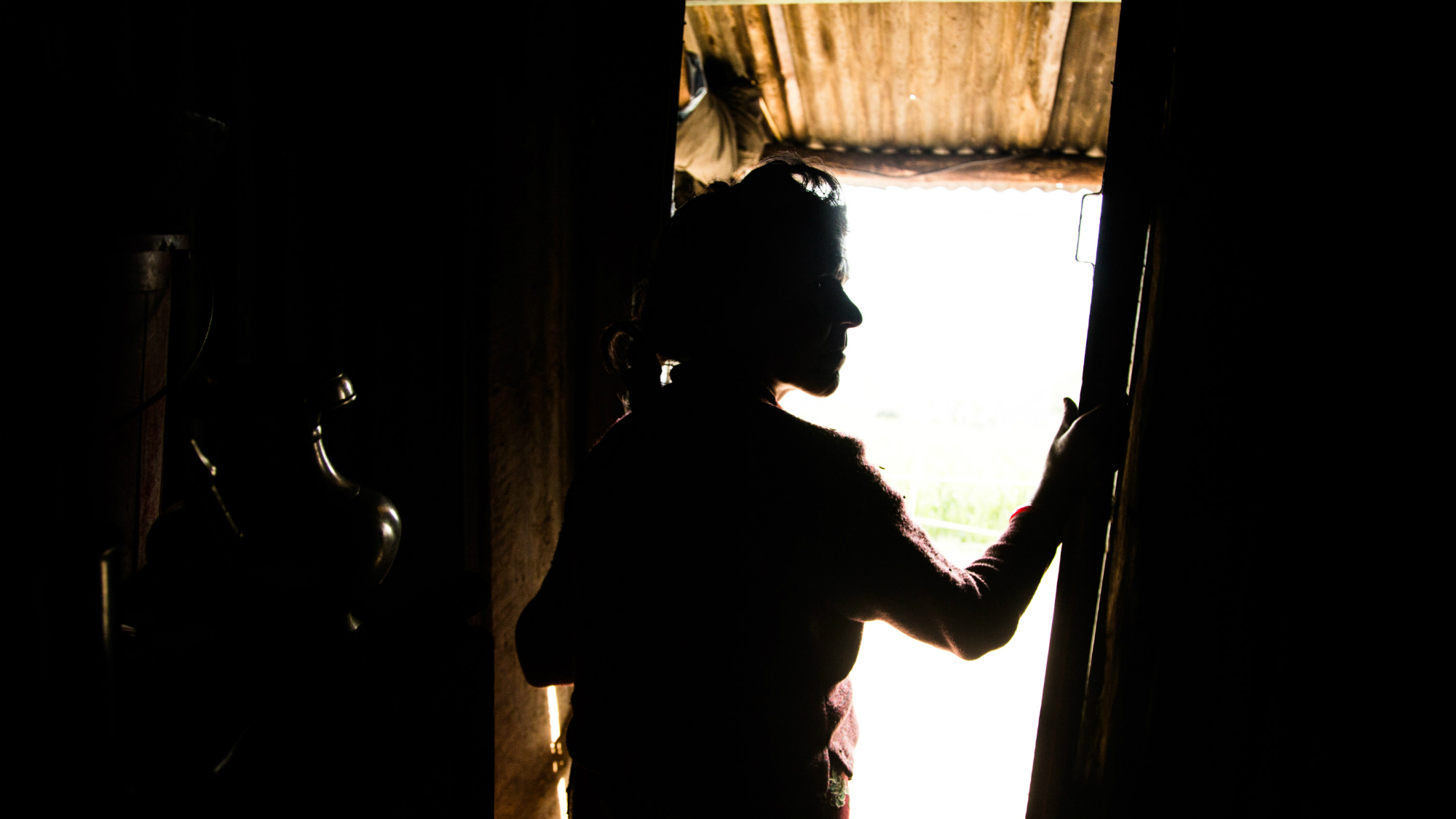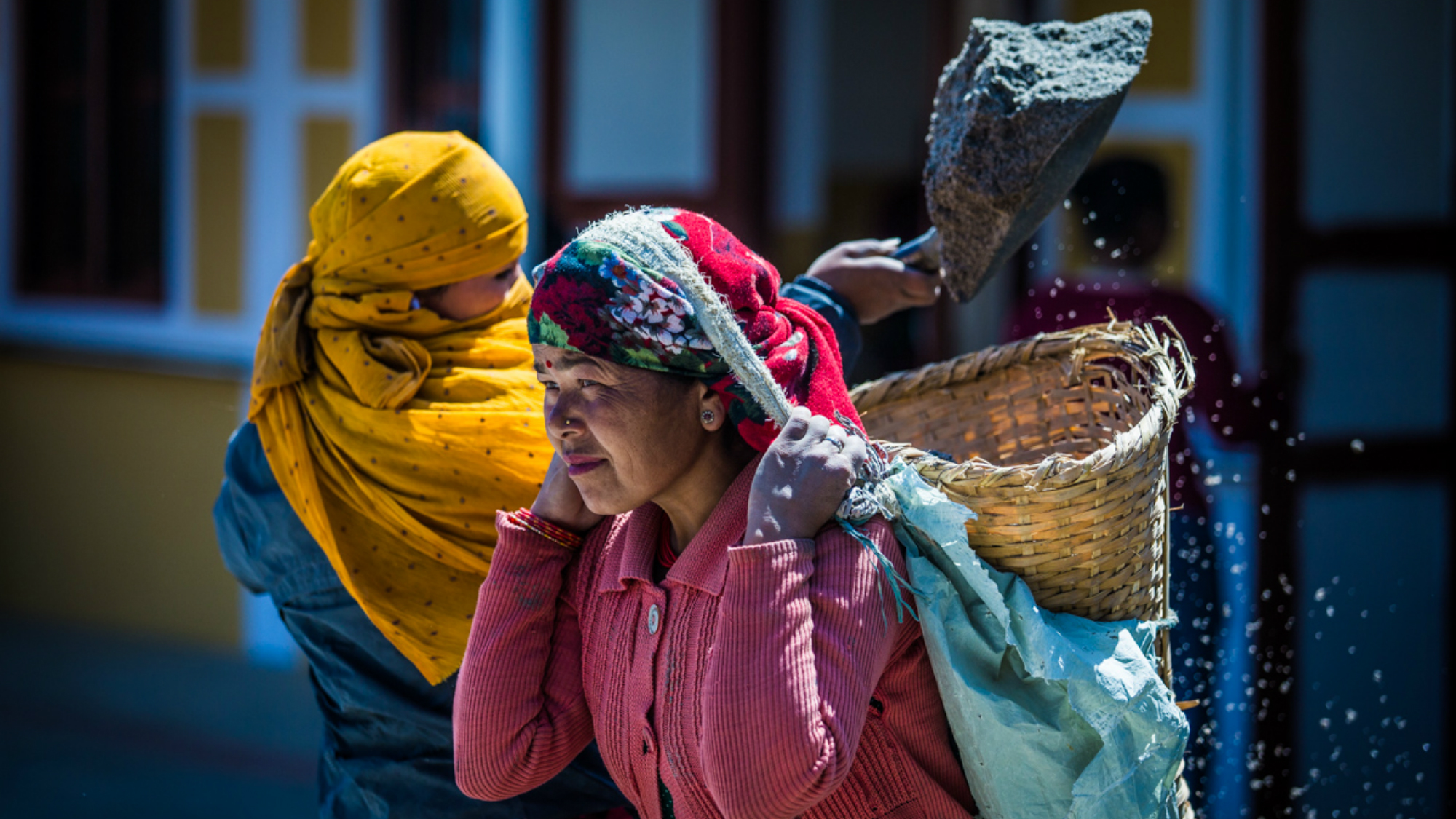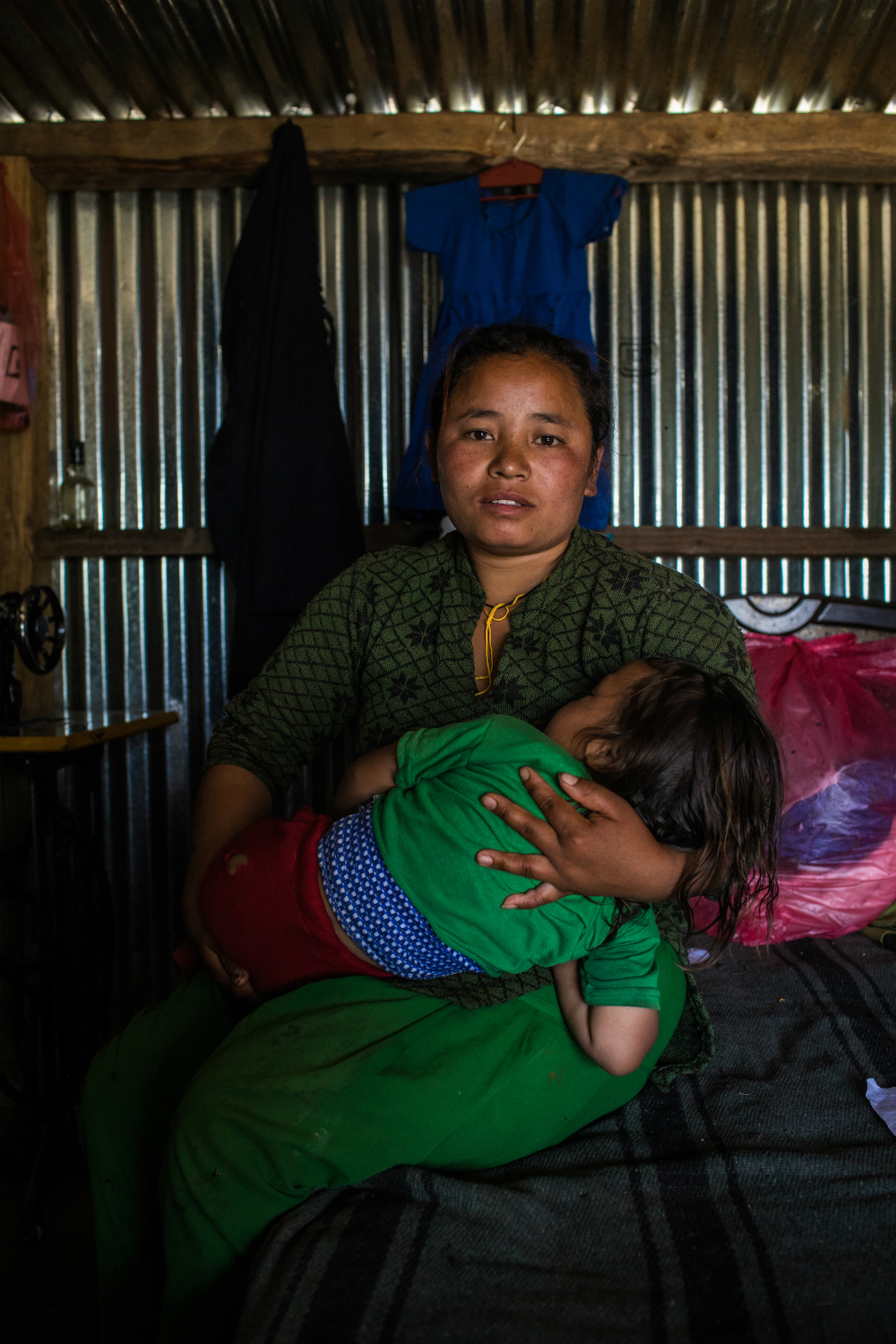Why are women always affected more by natural disasters than men?
Whether it’s a seismic shift that indiscriminately ends lives and sends buildings toppling to the ground, or a famine, tsunami or drought, women are always the ones who suffer the most. Corinne Redfern investigates why…

Whether it’s a seismic shift that indiscriminately ends lives and sends buildings toppling to the ground, or a famine, tsunami or drought, women are always the ones who suffer the most. Corinne Redfern investigates why…
It’s a six hour drive from Kathmandu to Kyul, in central Nepal. The roads don’t so much wind as coil their way around the mountains – a tight spiral of loose rocks and sharp ‘oh-my-God-we-could-fall-off-at-any-moment’ cliff edges that leave you gripping the small plastic handle above the window in your car; lest the vehicle topples off, and holding on with three fingers could somehow save your life. By the time you reach the sparse farming community, you’re tired and bruised. A twenty minute climb on foot follows. Thirty, if you haven’t been to the gym in a while.
‘We’re very cut off up here,’ agrees Shrijana, who lives with her husband and four of her six daughters in a one-bedroom hut, high on the hillside. ‘It wasn’t a problem until the earthquake, but suddenly all of our buffalo were dead, our house was destroyed and I didn’t have the money to send my children to school. It was so stressful; I didn’t know what to do – and there’s no one I can ask for help.’ As the pressure mounted, her husband began to disappear for days at a time – spending the little financial support they’d received from the government to rebuild their house on locally-brewed rice beer and wine. When he finally stumbled up the steep slope to their makeshift home, dishevelled and drunk, he’d be on the attack.
‘He was aggressive before, but I’d always managed to save up enough to send him to rehab when things got bad,’ Srijana explains, ushering her youngest children from the bedroom with a weary look and a worn-out sigh. ‘I can’t do that any more. But the more he drinks, the more violent he becomes.’ As a woman, she says, the earthquake increased her responsibilities, but crushed her independence. ‘I’ve thought about leaving him. But where would I go? I have nothing left. I can’t read, I can’t write, and it’s very shameful to be a woman who leaves her husband. The earthquake made everything worse for me.’
It’s been two years since the so-called ‘Gorkha Earthquake’ shook Nepal from its core – killing over 8,000 and leaving three and a half million without homes. Like all natural disasters, its initial impact appeared indiscriminate – houses collapsed around men and women alike; gender, religion and caste divides suddenly bridged by the country’s largest tragedy in eighty years. But as the literal dust (and mud, and rocks, and bricks) began to be cleared away, so one thing became apparent: women were affected far more severely than men.

Videos you may like:
Video you may like:
DOUBLE DISASTER
It’s the case with every environmental catastrophe. Unconvinced? Look first to the survival rates. In 2007, a joint study conducted by the London School of Economics and the University of Essex found that more women died in each disaster they investigated. But you can quickly debunk the myth that manly physical strength versus that stereotypical womanly weakness is a factor – nearly all research shows that the ‘disaster gap’ is due to cultural differences, not biological. I.e. It’s not because our muscles are smaller, or our breasts somehow get in the way. In Nepal, it was revealed that 53 per cent of victims were female – simply because more women were inside in their kitchens when the earthquake struck. The 2004 Indonesian tsunami cost four times as many women their lives as their male counterparts – because girls there don’t grow up running, swimming, or climbing trees. And over in Bangladesh, when the 1991 cyclone tore houses from their shallow foundations, 90 per cent of those killed were (yep, you guessed it) women too. Only in this case, it was because of deeply-ingrained social norms which actually dictated they wait inside until their husbands came home to tell them what to do. Now somehow we’re nearly thirty years on from that, and experts believe little has changed. But the scale of this discrimination only gets worse after the disaster. The myriad ways in which women experienced inequality during their day-to-day suddenly become heightened in the aftermath of chaos. When the 2010 earthquake hit Haiti, 14 per cent of the population said a female member of their family experienced sexual abuse in the months that followed, and following the earthquake in Pakistan in 2005, there was a reported surge in child marriage. Without equal access to education or employment – and suddenly without access to the tools they previously used to run small, independent businesses, women are left at the will of men.
Celebrity news, beauty, fashion advice, and fascinating features, delivered straight to your inbox!

'THEY’RE EATING WATER LILIES'
With those facts in mind, NGOs are working within Nepal to specifically assist women and children, after recognising that their post-quake vulnerability puts them at increased risk of trafficking, violence, and harassment – not to mention eyebrow-raising financial strain. ‘During times of disaster, women and girls bear the brunt of the crisis and pre-existing gender inequalities are made even worse,’ Tanya Barron, Chief Executive of Plan International UK explains. ‘Women living under tarps and temporary shelters feel exposed to risk of violence, and increased alcohol drinking by men increases the risk of gender-based violence. Fewer girls will return to school as they are married off or expected to help rebuild livelihoods and look after small children. Girls are more likely to go hungry during food shortages as well.’ Her sentiments are echoed by Kristin Myers. The 28-year-old Communications Officer for Concern Worldwide was in South Sudan for three weeks in March, and says she witnessed disproportionate numbers of women and children suffering from the famine. ‘South Sudan's hunger crisis is linked to its conflict,’ she explains. ‘But men are often killed or away in the fighting, leaving the women with little to no economic support for their families. So not only must women grapple with issues of displacement and violence, they must also figure out how to support and feed their families. These are women who relied on their husbands to be the economic providers and are now left struggling. In peacetime it can be hard to be a single mother; imagine doing it during a disaster, when jobs and assets are hard to come by. They’ve actually turned to eating water lilies.’ Back in Nepal, there’s another issue needing to be taken into consideration: the number of men leaving the country to find work has soared to over 1500 every single day – leaving increasing numbers of women running their households alone. For 24-year-old Anita Tamang, from Bhusapheda, the consequences of living alone were unexpected. When her husband headed to Russia, she suddenly found herself living as a single parent to their daughter, Sristika, and without any source of income. ‘Over two years, we became one of the poorest families in the community,’ she explains from the immaculately tidy single room that serves as a bedroom, kitchen and living space. ‘We still haven’t received any government funding, because my husband was away, and I couldn’t register myself as the head of household because I was a woman.’ With Plan International UK’s support, she’s recently set up her own tailoring business – making school uniforms for local children, and selling them for 100 rupees (80p) at a time. ‘I’m trying to earn enough money to build a house that doesn’t leak,’ she says.

'PROGRESS IS HAPPENING'
‘Emergency aid responses need to identify the specific needs of women and girls as a priority,’ says Tanya. ‘Providing training to women so that they can set up their own small businesses, such as tailoring, farming and masonry helps provide an alternative source of income enabling them to rebuild their lives, and their communities, in safety. That’s also why we’ve provided a number of protection services to women and girls in Nepal, including running safe spaces for children, community information centres, trafficking awareness programmes and helping to monitor border areas.’
Nissa Nieha, 29, has spent the last two years working in one of the NGO’s anti-trafficking booths in Dolakha, a region near the epicentre of the earthquake. ‘After the disaster, we saw so many more girls being trafficked and abused – some even by their own parents,’ she explains – adding that they picked up 41 children in the first month alone. ‘Most of them really thought they were being sent to Kathmandu “to find a good job”. They were so desperate not to let their families down that when we’d rescue them, I’d have to lock them in overnight to stop them from running away.’ The earthquake put so much pressure on parents, she adds, that they became increasingly reliant upon their daughters to provide extra income - even if it meant putting them in dangerous situations. ‘Two years on, and we’re down to stopping four or five children a month – so progress is happening. But trafficking is also still going on.’
And while putting measures in place to support women after a disaster is vital, everyone acknowledges that equal focus needs to be placed on protecting this depth of inequality from reoccurring ahead of the next catastrophe. After all, as a study published in Nature Geoscience journal claims South Asia is at risk of a magnitude 9 earthquake (Nepal’s 2015 disaster was 7.8 on the Richter Scale) – it’s only a matter of time until catastrophe strikes again. And until women and girls have equal access to education and employment, they’re at increased risk during and following natural disasters, wherever they live in the world. ‘Women have always had harder lives than men here,’ adds Srijana, as her ten-year-old daughter appears to warn her that her husband is halfway home; his voice already heard from halfway up the hill and apparently (inexplicably) covered head-to-toe in mud. ‘We have to take care of the children and do the housework, and find the money to send the children to school, and look after our husbands. But after the earthquake, we have to do so much more with so much less. I’m used to it now, but I look at my daughters and think, “I hope you never have to live like this”.’ And with that, Srijana heads outside to confront her husband, in the middle of nowhere, entirely on her own.